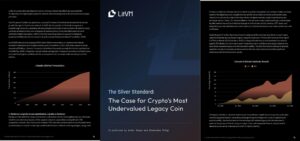Bitcoin’s October rally has placed the cryptocurrency on solid footing ahead of a central bank meeting in the US, UK and Australia, which aims to assess the stickiness of worrying levels of inflation.
The top crypto rallied 40% in October, hitting a record high of $67,000 as investors enjoyed the first innings of typical Q4 tailwinds. The launch of the first futures-based bitcoin exchange-traded-funds (ETF) in the US also played its part, though there are several reasons why investors should avoid this futures product. That was the biggest single-month percentage rally since December last year.
Cryptocurrencies aren’t going away. Buy Bitcoin here.
While key data suggests positive follow-through in the months ahead, crypto markets are rarely a smooth ride. The US FOMC meeting is expected to announce a scaling back of stimulus, known as taper which in the past has caused a so-called ‘taper tantrum’ in equity markets.
However, markets have had over a month to mull this news over, so any potential shock waves will likely be tempered. In fact, if the taper announcement is merely a formality, it’s possible that the impact is muted since markets are forward-looking.
Still, Wednesday’s Fed meeting is expected to conclude with policy makers announcing formal plans to start tapering the monthly $120 billion in asset purchases which triggered an avalanche of risk-taking behaviour across decentralised and traditional financial markets in the last 18 months.
Barring any major deviations in the announcements, the language surrounding the rate hike and the timing of the first rate hike might be more important than the policy itself.
Several policymakers have slowly changed their tune on inflation, saying that it is proving to be more sticky than previously expected. Meanwhile, open interest in the bitcoin and crytpo futures markets has increased to all-time-high levels. The stakes are high.
For what it’s worth, Goldmach Sachs brought forward their forecast for the first rate hike of July from Q3 2023, according to Bloomberg.The banking giant expects a rate hike in November 2022, followed by two hikes in 2023 and 2024.
The investment banking giant expects the second rate hike in November 2022, followed by two hikes in 2023 and 2024. The relationship between bitcoin and the US 10-year treasury yields has been somewhat complimentary, with US10y doubling to 50 basis points in October.
Increasing yields could see money flowing into Bitcoin for several reasons, firstly because it’s an inflationary hedge and the second reason being that as bond-yields increase capital flows into the bond market are stunted, which may in turn shift flows to other assets like Bitcoin, Litecoin and Ethereum.
Amalgamating both worlds in a curious take, ByteTree Asset Management’s Charlie Morris told Bloomberg that bitcoin is a “risk-on inflation hedge.” The cryptocurrency’s gold-like store of value appeal attracts buyers when financial markets see strong demand for growth-assets. However, bitcoin has also taken a beating when global markets wilt – though this correlation is spurious at best on a longer time horizon.
Besides the Fed meeting, investors will keep an eye on Tuesday’s Reserve Bank of Australia’s (RBA) meeting and Thursday’s Bank of England’s rate decision and Friday’s U.S. nonfarm payrolls report. Money markets expect the BOE to hike interest rates this week.
Will Bitcoin win out regardless? Time will tell.
Join the telegram channel for updates, charts, ideas and deals.
Did you like the article? Share it!


